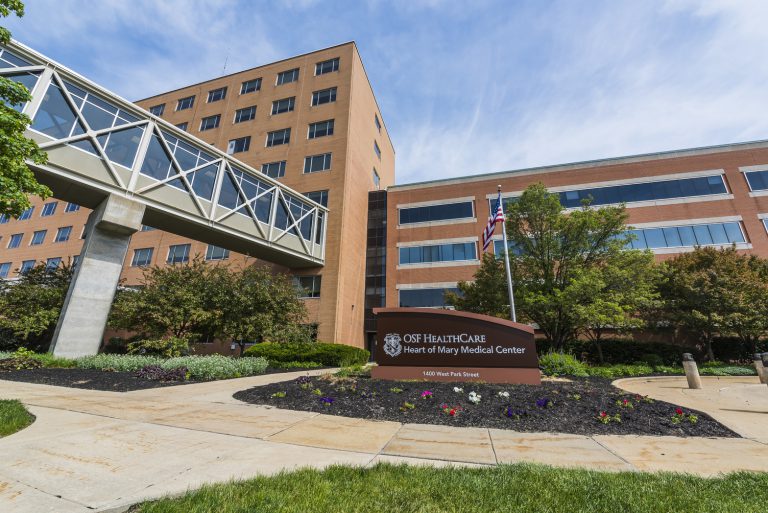URBANA – Health care providers in central Illinois say they have run into issues with nursing homes not wanting to accept residents back after they’ve been hospitalized for COVID-19.
Dr. Robert Healy, chief quality officer of Carle Foundation Hospital in Urbana, says early on in the pandemic, some nursing homes had been requiring proof that patients no longer have the illness before they’d allow them back to the facilities.
But Healy says it has become less of an issue, after public health officials issued guidance to nursing homes earlier this month on how to isolate or quarantine patients returning from the hospital.
“We do still have some sporadic problems where (a nursing home) doesn’t want to take somebody,” Healy says. “But so far, it’s been manageable.”
A spokesperson for OSF Healthcare, which has medical centers in Urbana, Peoria, Normal and Chicagoland, said in a statement that they have experienced similar challenges and have worked with nursing homes to find the best location for patients to continue their recovery once they’re ready to leave the hospital.
“There are facilities that are willing to take discharged patients, however staffing is often an issue,” the statement reads. “OSF HealthCare has been working with these nursing homes to help fortify staffing needs so these facilities can accept patients… We have needs on a daily basis for transferring patients from OSF HealthCare Little Company of Mary Medical Center [in Evergreen Park] to skilled nursing facilities.”
A representative of the Illinois Health and Hospital Association told WBEZ in a story published April 9 that hospitals across the state were running into issues trying to transfer COVID-19 patients to nursing homes.
Champaign-Urbana Public Health Administrator Julie Pryde says the congregate living facilities in Champaign County have been taking precautions to prevent the spread of COVID-19 and are able to safely care for residents returning from the hospital.
Pryde says the main concern for nursing homes and other congregate living facilities, including jails and prisons, is that COVID-19 will be introduced to the population through employees.
She says facilities have been doing “amazing infection control,” including conducting symptom checks on staff and requiring they wear surgical masks or cloth masks any time they are around residents.
Following public health guidance, facilities regularly clean and sanitize, Pryde says, and they implemented protocols early on to prevent cell phones from being a source of cross-contamination.
“In Champaign County, we have long-established relationships with hospitals, long-term care facilities and shelters,” Pryde says, which made it easier to provide guidance in the early stages of the pandemic to protect residents and staff.
Healy and Pryde made their comments at an online news briefing in response to questions from Illinois Newsroom and other media outlets. The weekly meetings started on April 16 and are focused on topics related to Champaign County’s response to COVID-19.
If you have a question you would like to ask local officials regarding COVID-19, submit it here.
Christine Herman is a reporter at Illinois Public Media. Follow her on Twitter: @CTHerman

